Katie Byerly of Cerro Gordo County is also known as Iowa Prairie Girl on YouTube.
There are two ways a person could start an article about Mountain Death Camas (Zigadenus elegans). One introduction could include words like dangerous, poisonous, and fatal! And the other would involve words like striking, stunning, and uniquely beautiful. Let’s start with the beautiful part first.
THE BEAUTY
The flowers of Death camas have six papery white petals (or in the case of Death camas – tepals). The striking star-shaped flowers are about a 1/2-inch across. Each petal has an olive green, heart-shaped gland near its base. When the flower opens, these glands present as a lovely circle on the flower, often with an inner yellow fringe.

Here is an image of the back of the flower. The term tepal is used when the petals and sepals cannot be differentiated.
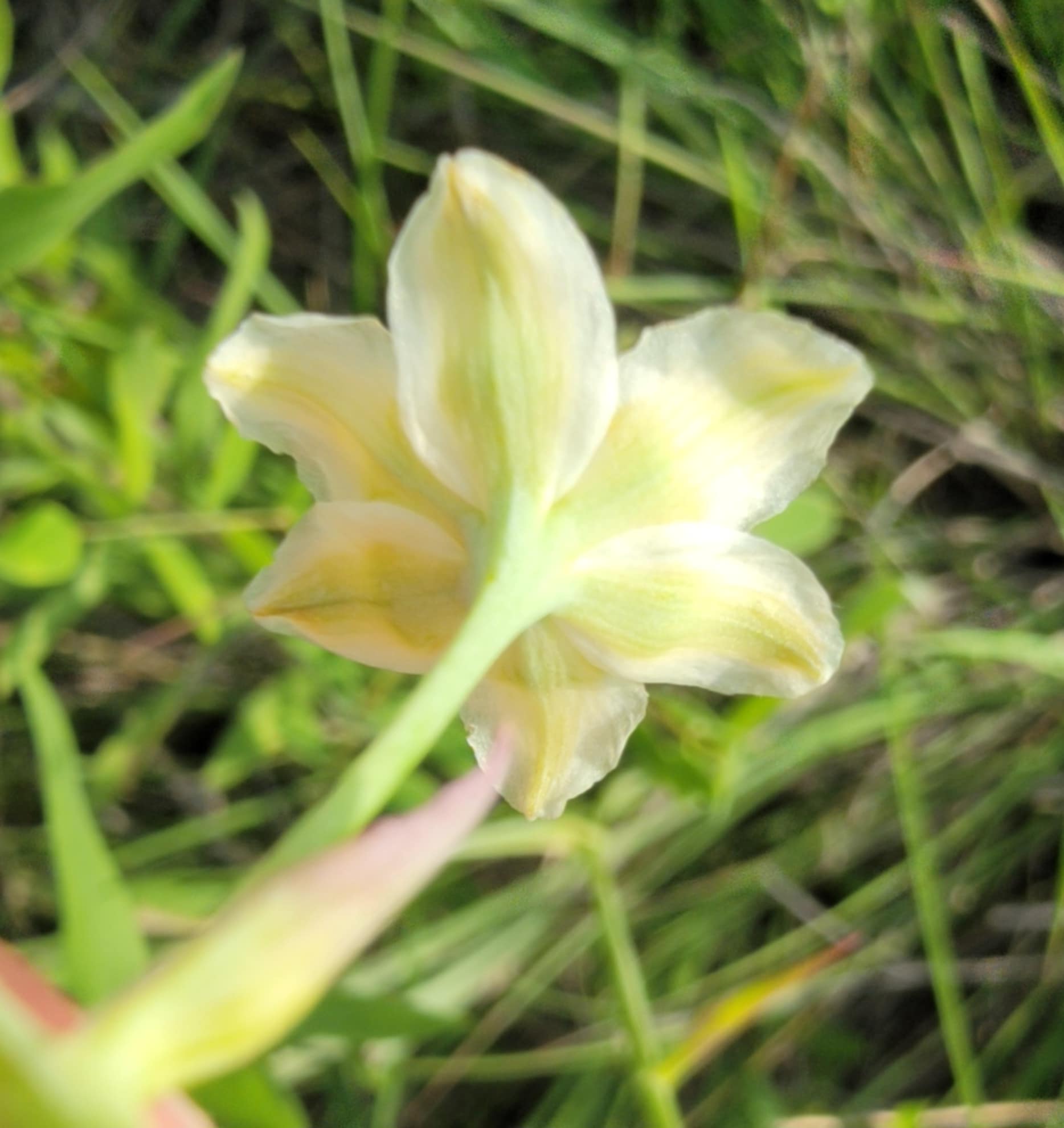
In the center of the flower is its prominent cone-like style, which splits three ways. Surrounding the style are six arching stamens.
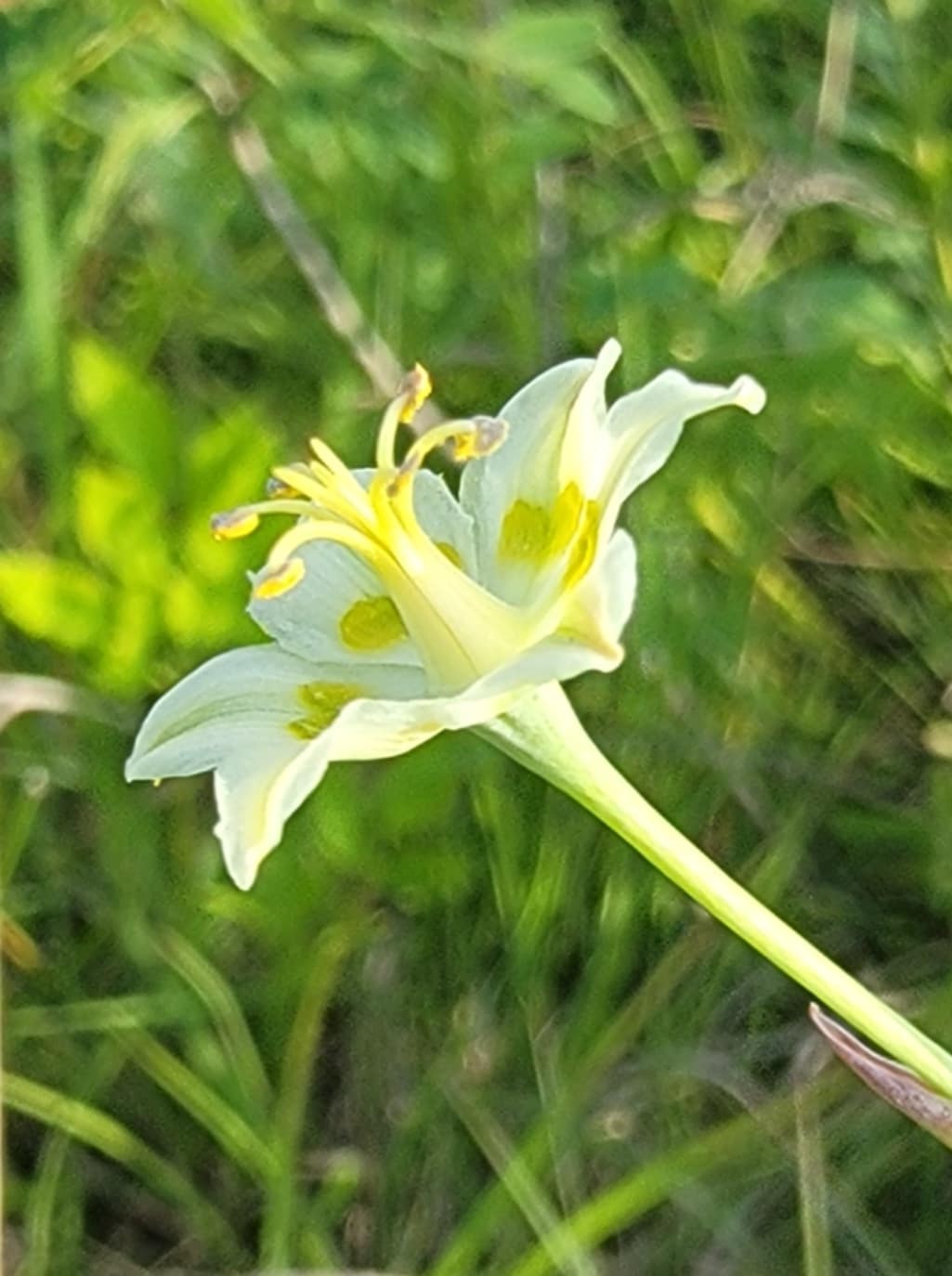
The stamen tips (anthers) seem to come in or change into many different colors. I have photos of Death camas flowers with yellow, yellow-orange, orange, green, green-purple or purple anthers. The bright stamens against the white petal background creates stunning images.
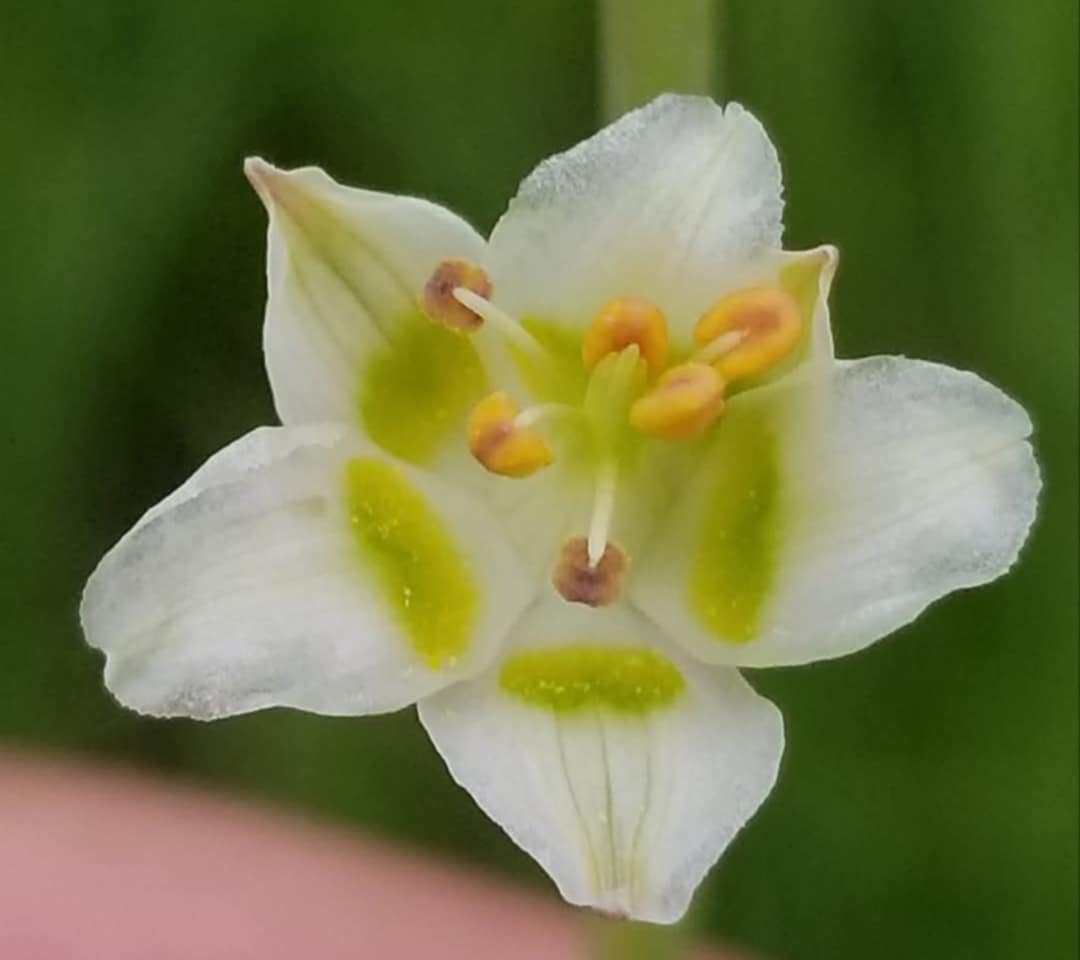
Each flower has its own 1-inch-long stalk. The flower stalks of the Death camas have a unique lance shaped bract. It is onion skin thin and a pinkish-purple color.
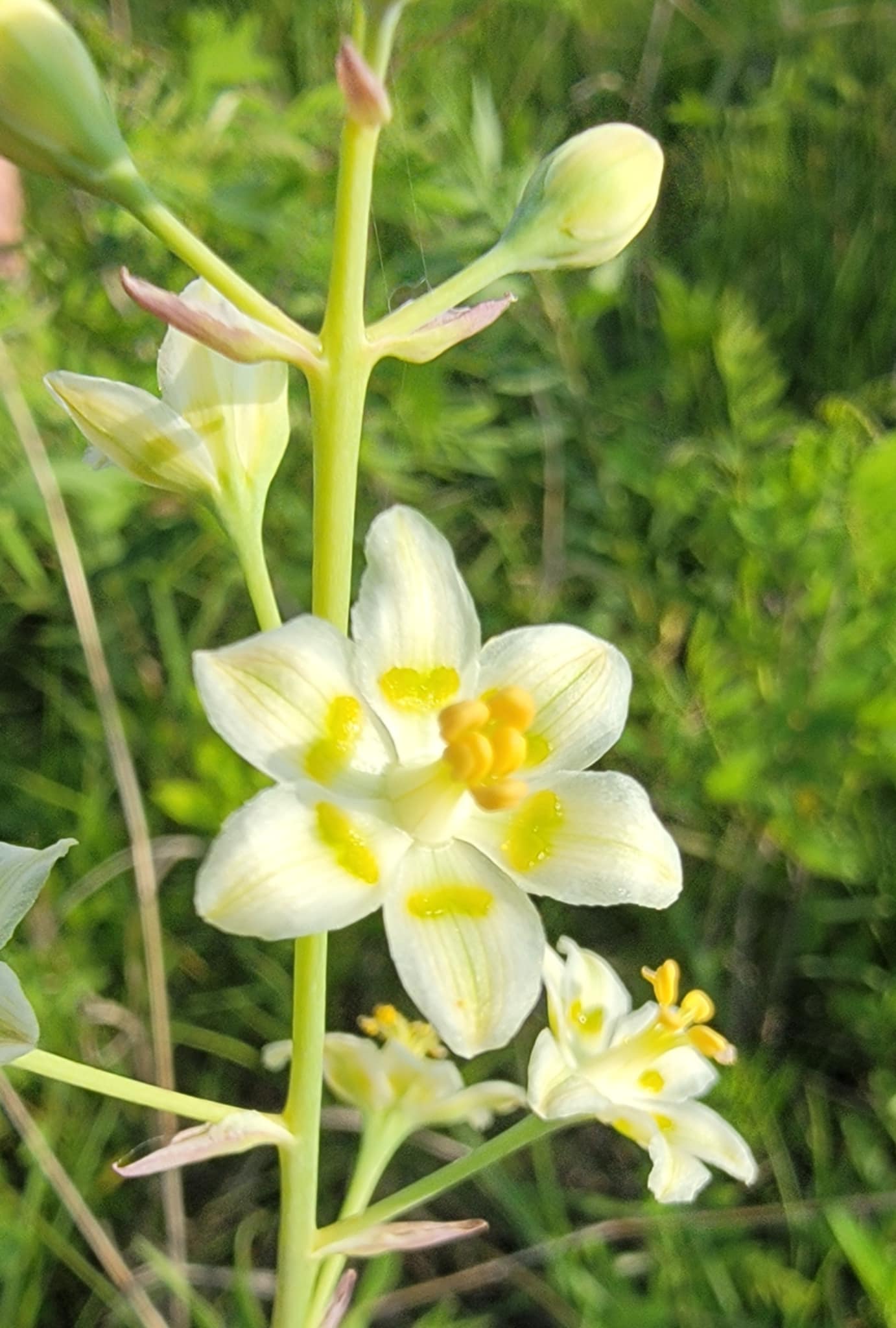
The plant stands erect with its smooth, light green stem. It may just have one raceme of single stalked flowers, or it may branch into several straight upright racemes. One plant may have ten to 50 flowers. It averages a height of 2 feet.
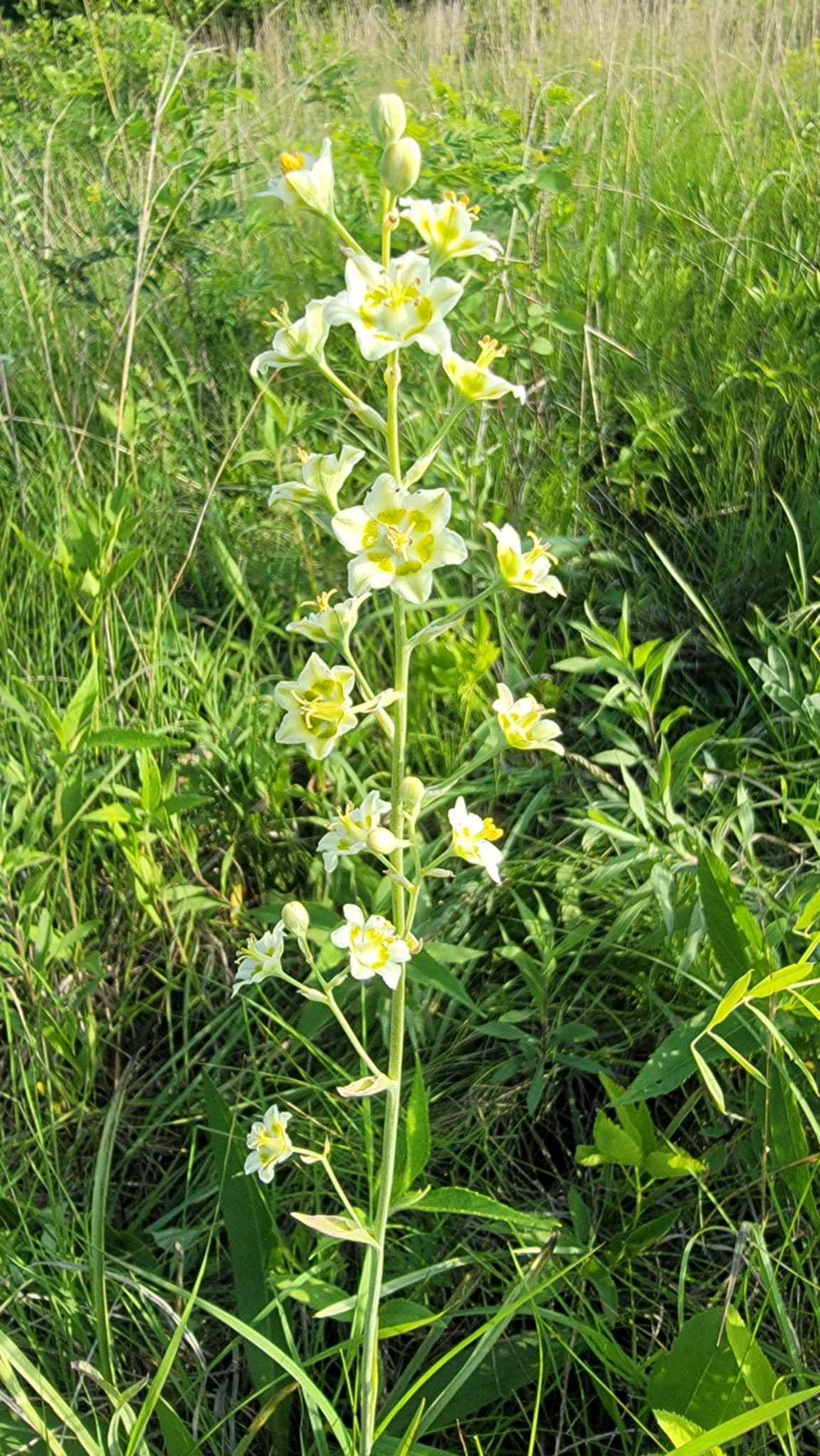
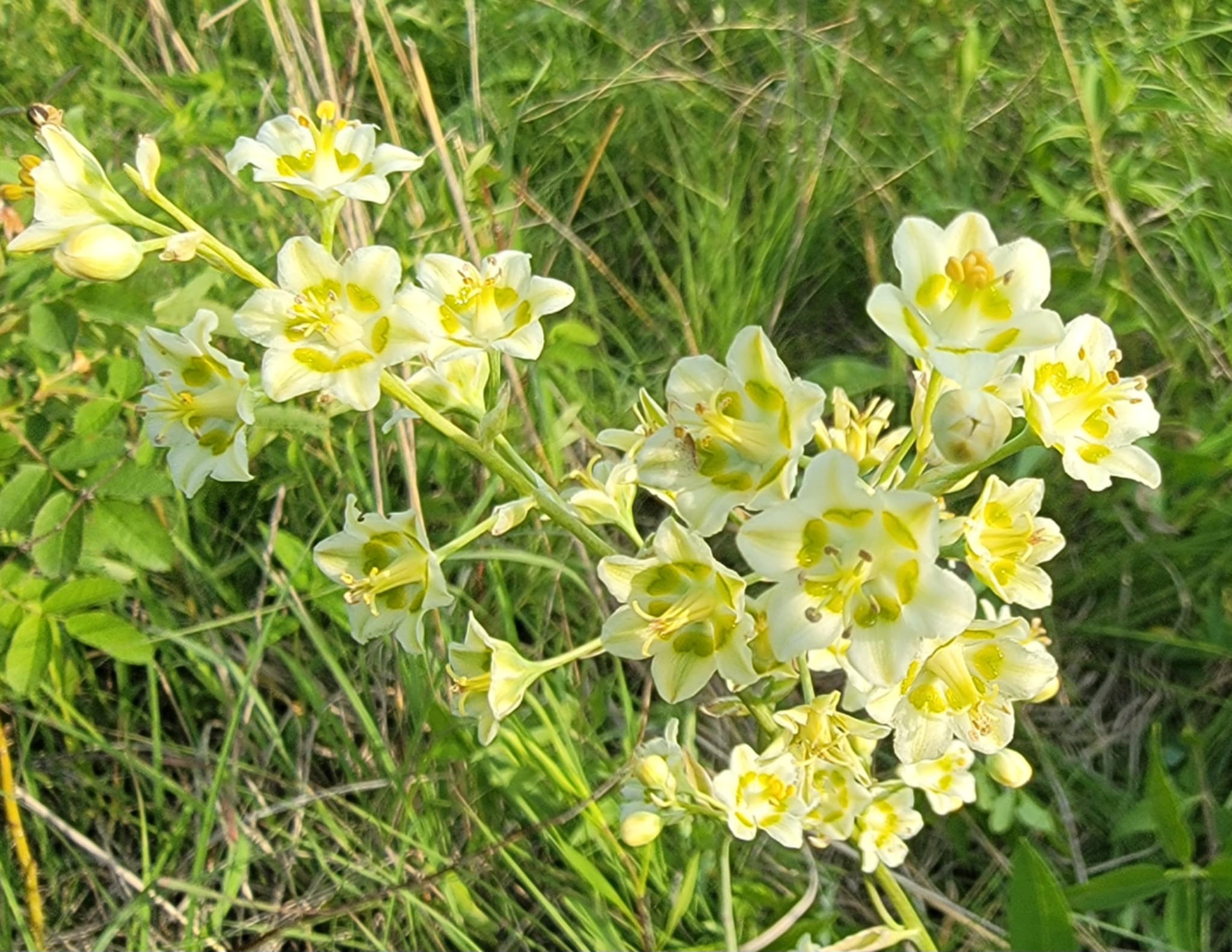
The leaves of Death camas are mostly found around the base of the plant (basal). The long and slender (4 to 12 inches long, 1/4 to 1/2-inch wide) leaves are called grass-like. They are flat but sometimes fold longitudinally. Another name for this plant is Alkali Grass.
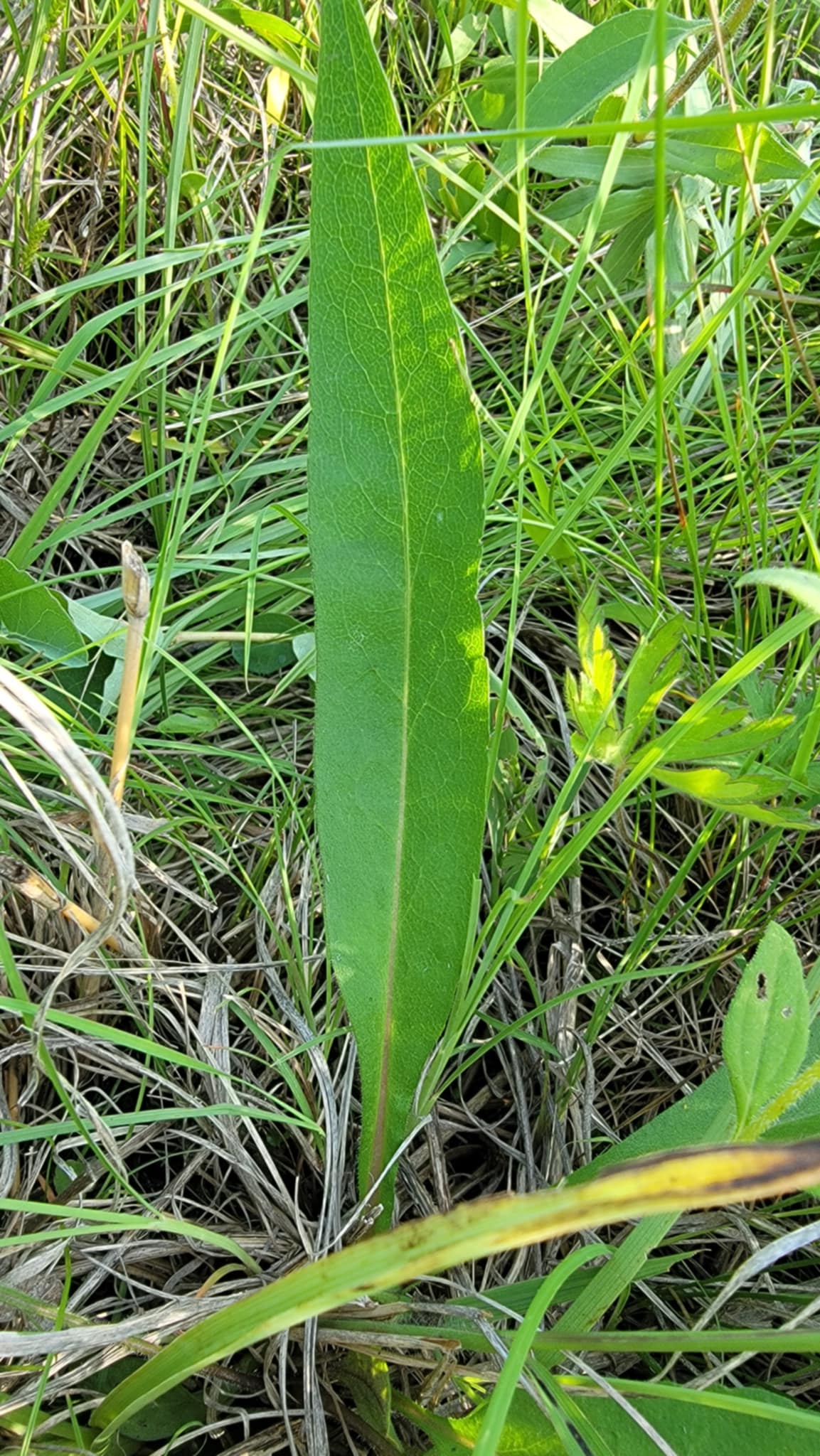
In northern Iowa (Cerro Gordo County), Death Camas blooms in June. The flowers create a cone-shaped seed capsule. As the capsule develops and dries, the drying tepals and styles remain present. I captured this image on a damp late June morning. The seed capsule is beginning to form.
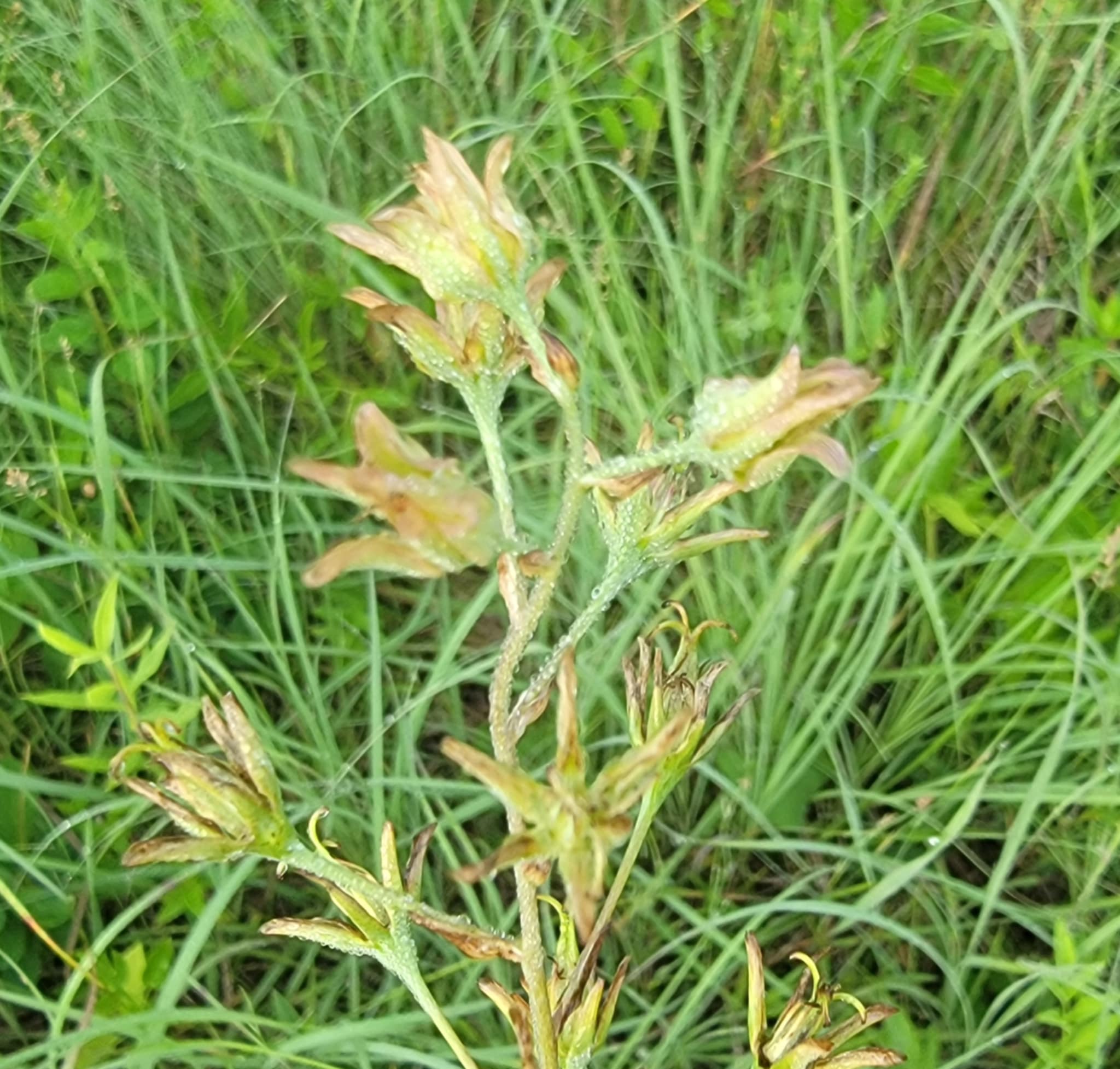
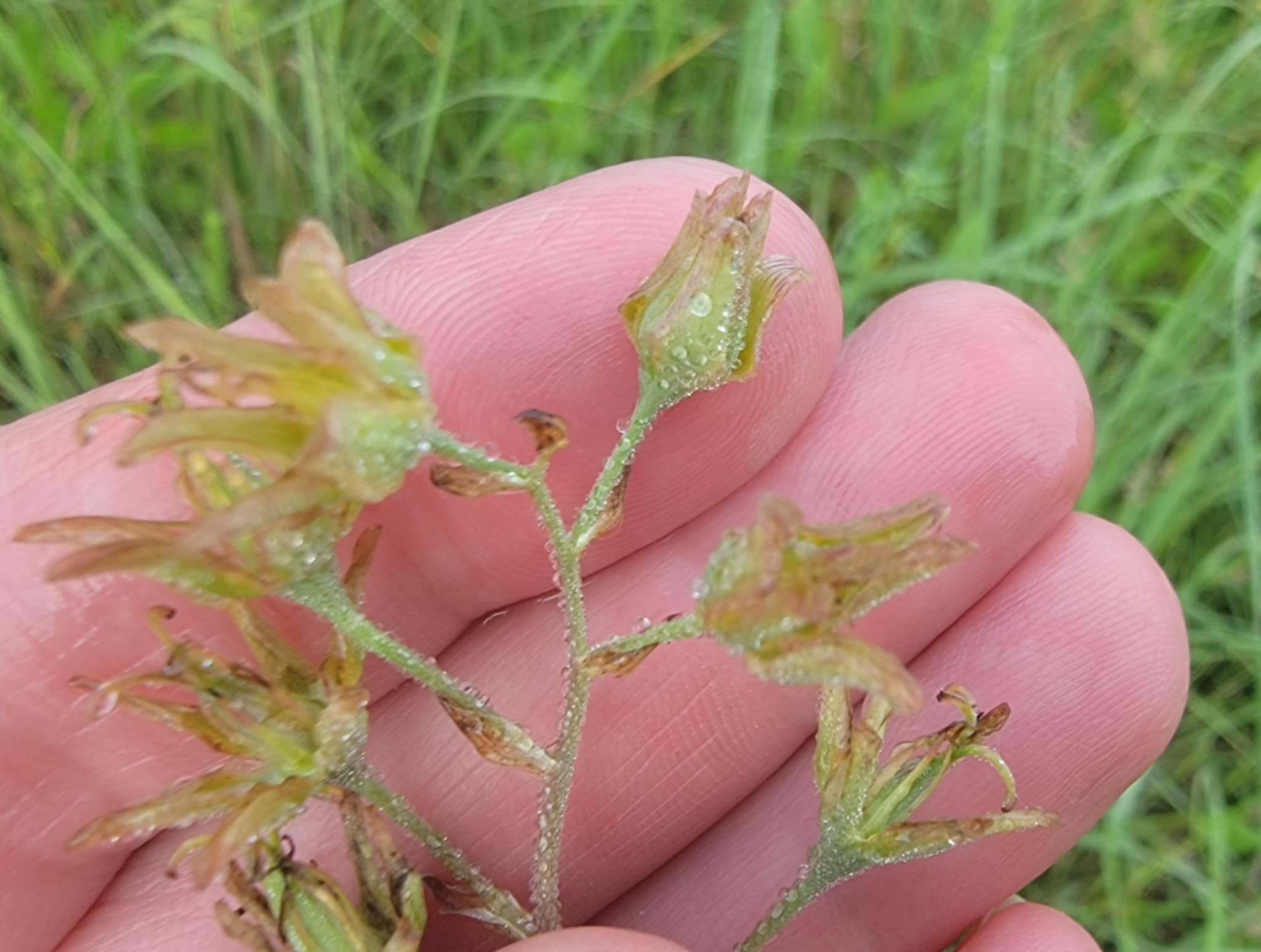
I first became aware of Death camas at my favorite haunt: Wilkinson Pioneer Park in Rock Falls, Iowa. There are only a few Death camas plants at the park. It doesn’t seem to be an aggressive plant, and I vaguely recall seeing Death camas at other locations in the state. I wonder if that has to do with the second part of this article.
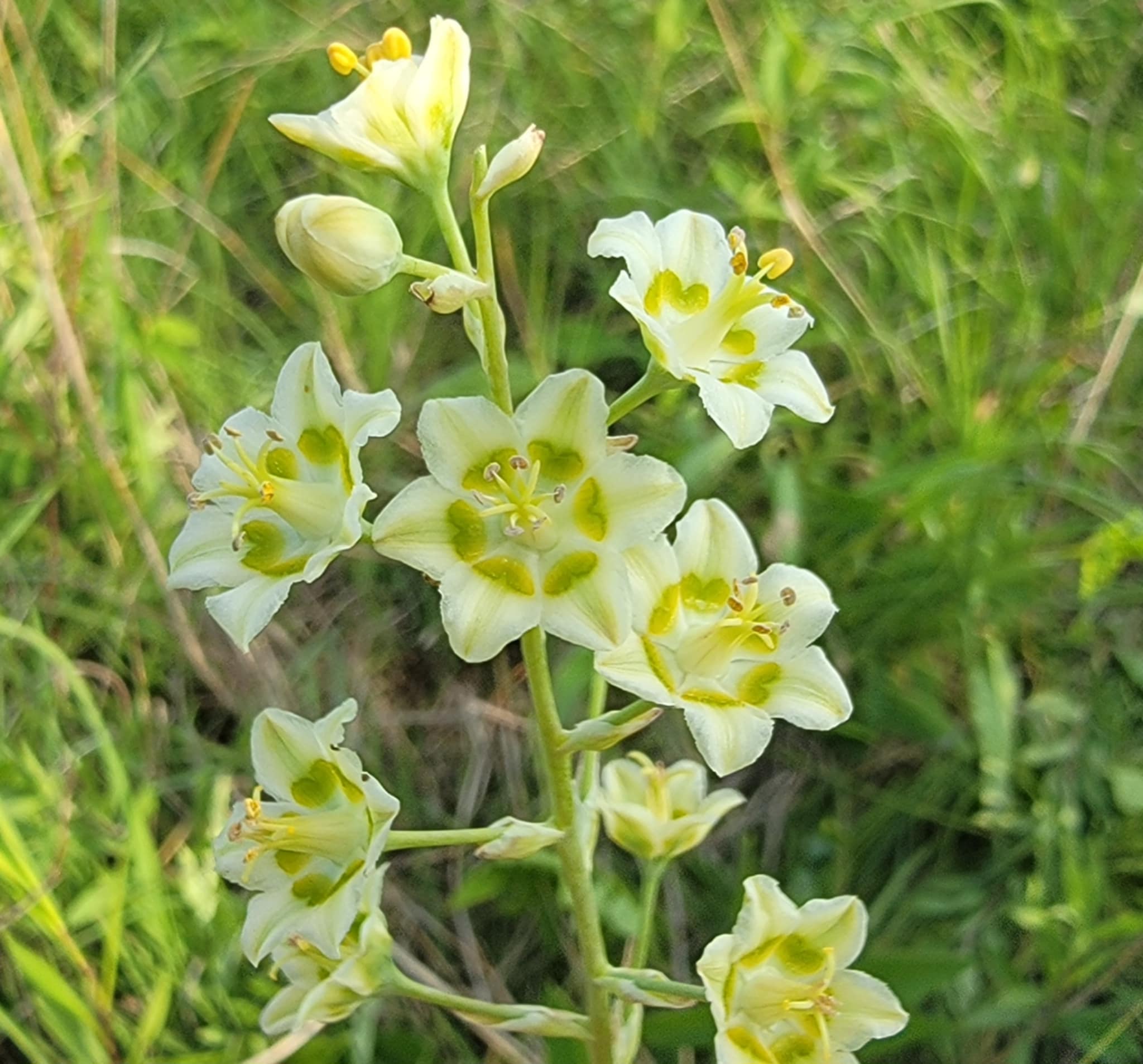
THE DANGER
Part two. . . Death camas is 100 percent poisonous! Not only is this plant poisonous to humans and animals, even its nectar and pollen are fatal to insects.
It takes a specialized bee to pollinate Death camas, and even it doesn’t eat the pollen. The death camas miner bee (Andrena astragaili) might be the only bee that can tolerate the Death camas’ toxin, zygacine. This solitary, ground-nesting bee uses the pollen to make a pollen ball. The bee buries the ball in the ground with an egg. When the egg hatches, the larva feasts on the pollen ball. Read more about the relationship between this plant and its pollinator in this article by Jeff Mitton at the University of Colorado Boulder: “The paradox of toxic nectar and pollen in death camas.”
Every part of Death camas is poisonous. Some parts of the plant become more potent has they mature, particularly the leaves and seeds. The bulbs are especially dangerous as foragers may mistake them as wild onion bulbs in the spring when the leaves first emerge. Death camas contains a steroidal alkaloid called zygadenine. Britannica defines an alkaloid as:
alkaloid, any of a class of naturally occurring organic nitrogen-containing bases. Alkaloids have diverse and important physiological effects on humans and other animals. Well-known alkaloids include morphine, strychnine, quinine, ephedrine, and nicotine.
The alkaloid in Death camas can be fatal to humans and animals if consumed. This explains its other name: Poison Camas.
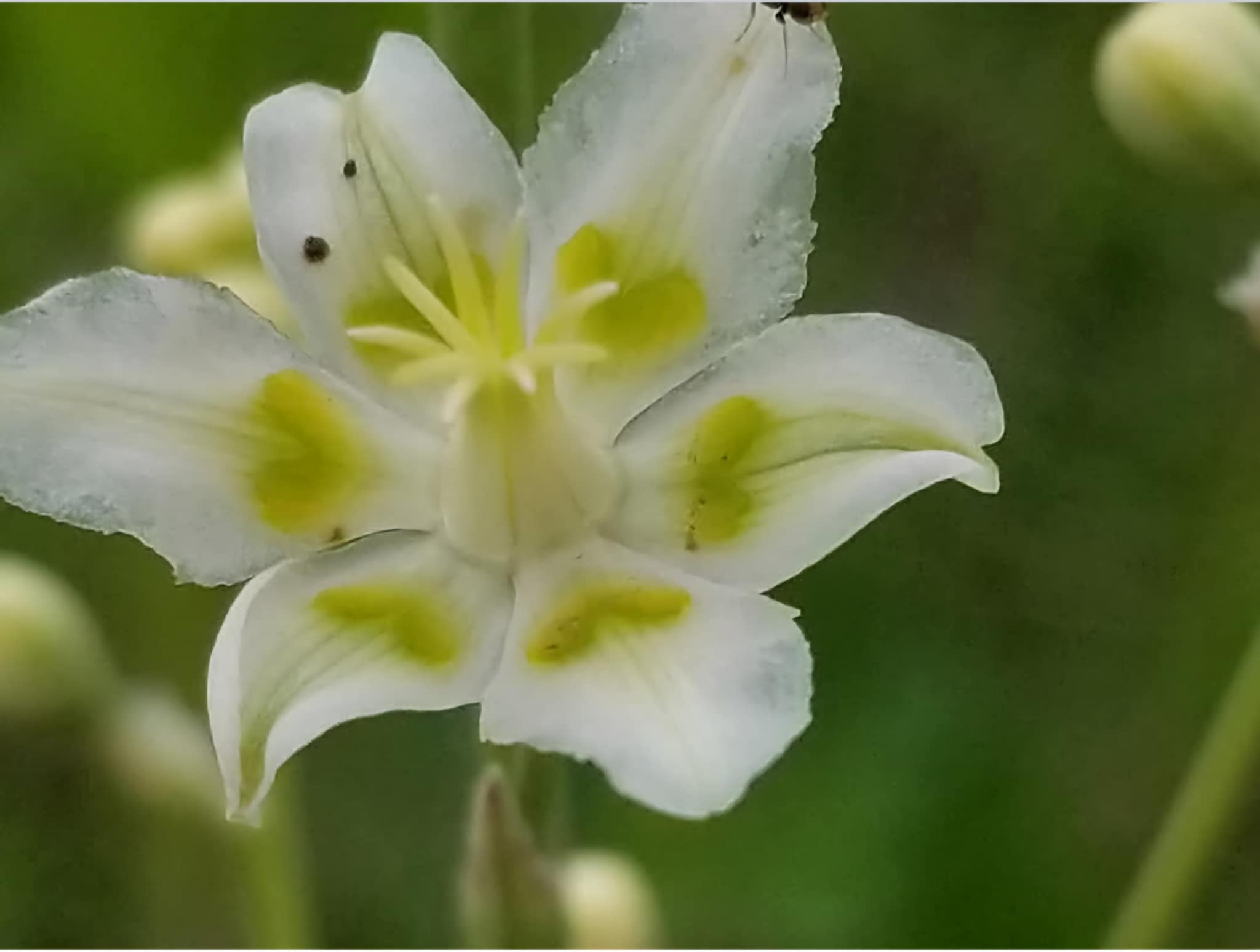
Before the Wilkinsons donated their land to the county for a park in 1960, Mr. Wilkinson used the land as a pasture for his prized cattle. I wonder if he knew this sun-loving, native wildflower was present. It is a beauty in its own unique way—just be sure not to let you and yours eat it.
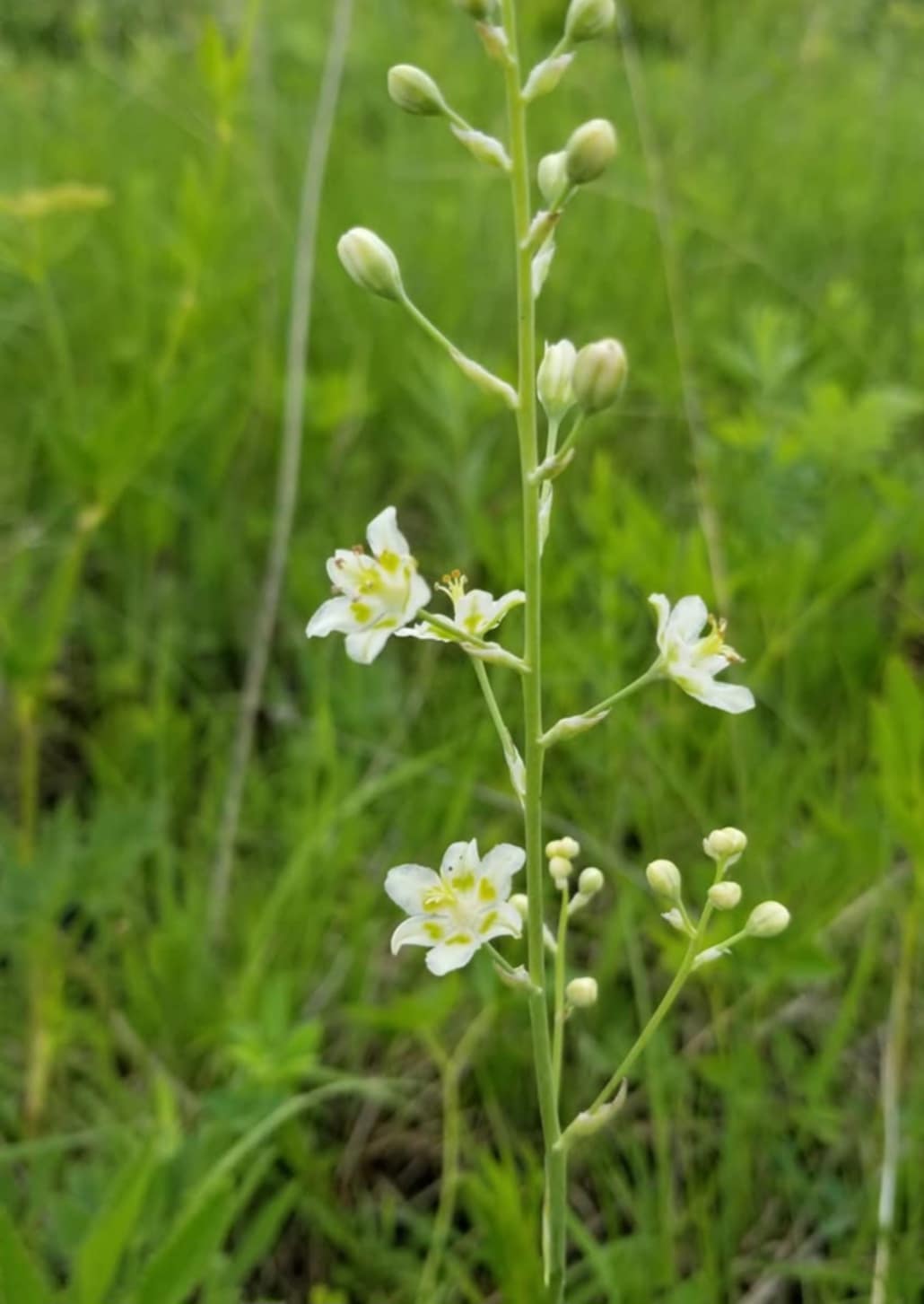
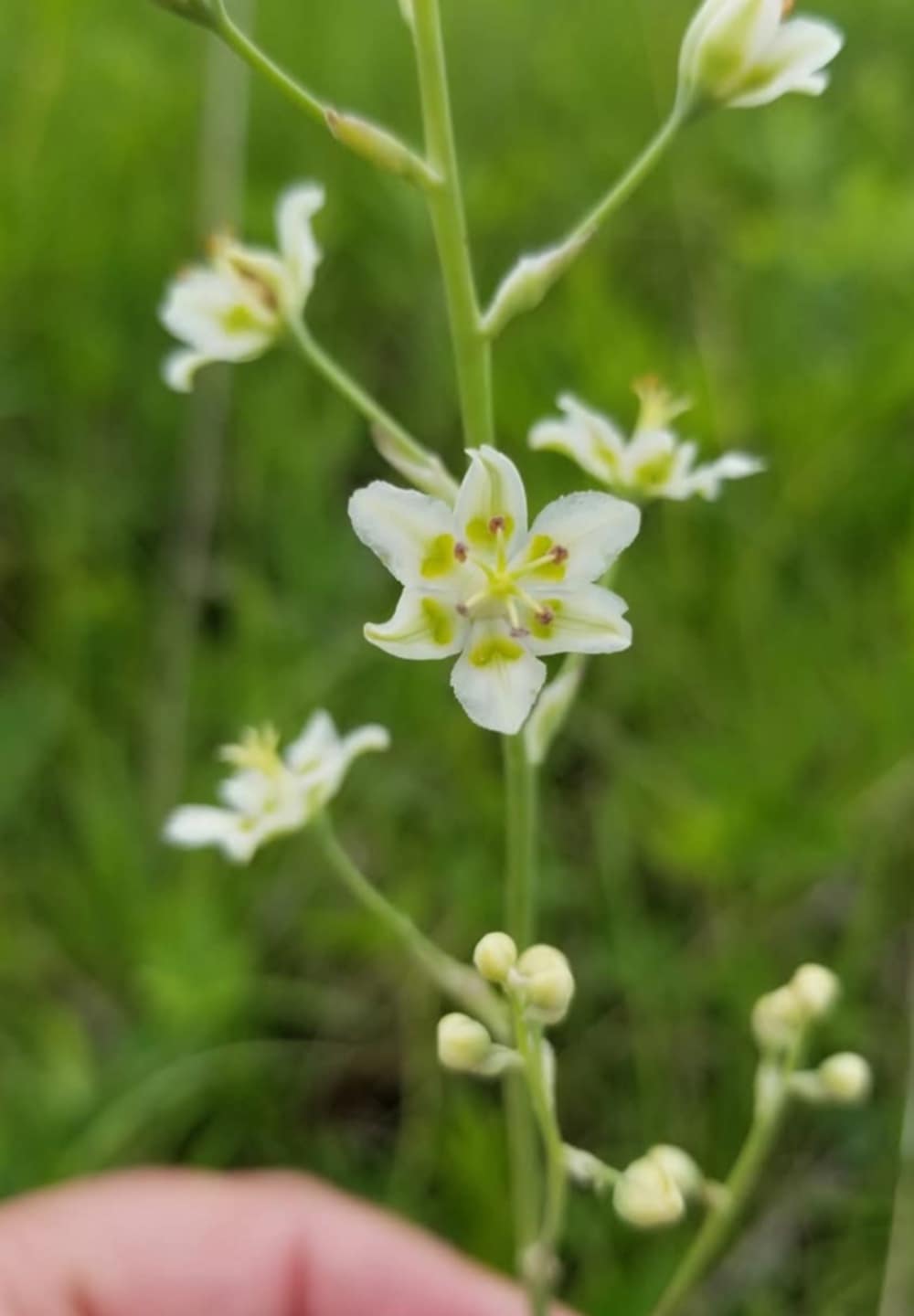

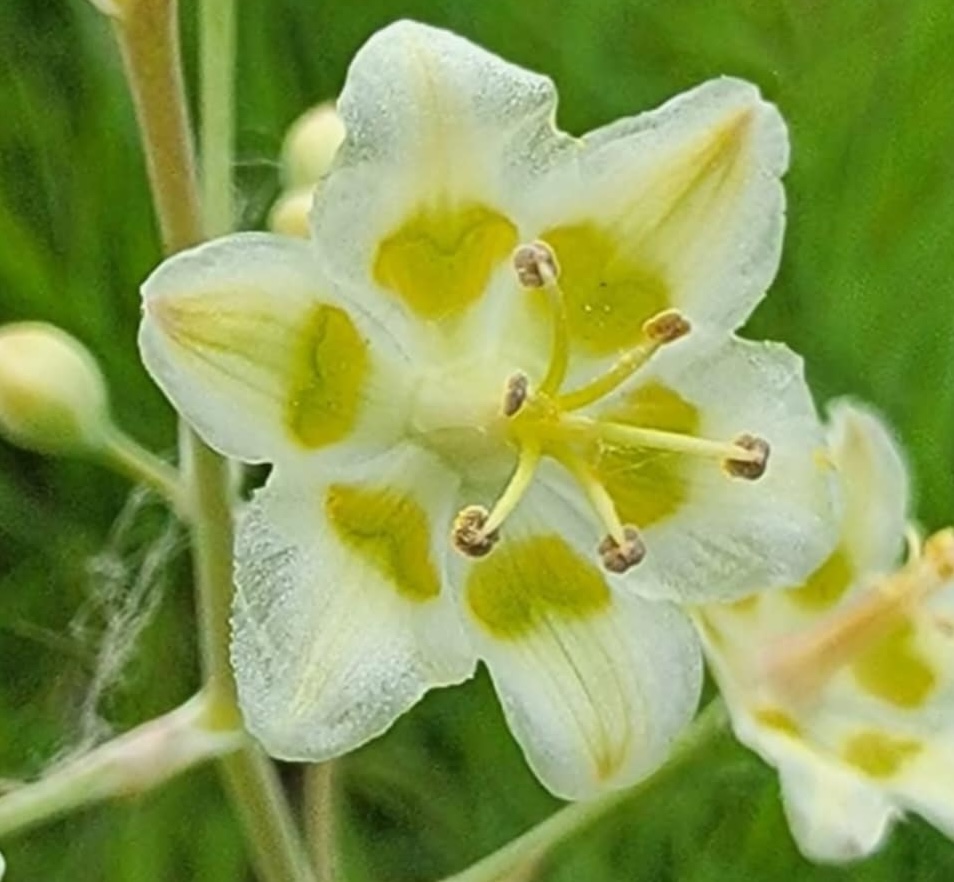
1 Comment
What a gorgeous flower, Katie, thank you!
Every former Iowa pasture that didn’t spend any significant time as a cornfield should be carefully checked for prairie flora by new conservation-minded owners before any changes are made. I’ve heard several stories about Iowa prairie pastures being turned into tree plantings or ponds, or (very ironically) being tilled up and replanted with prairie seed, because the conservation-minded owners didn’t realize what they had until it was too late. And some special prairie flowers that tend to be found in prairie pastures are hard to propagate in prairie plantings.
PrairieFan Mon 14 Jul 3:24 PM